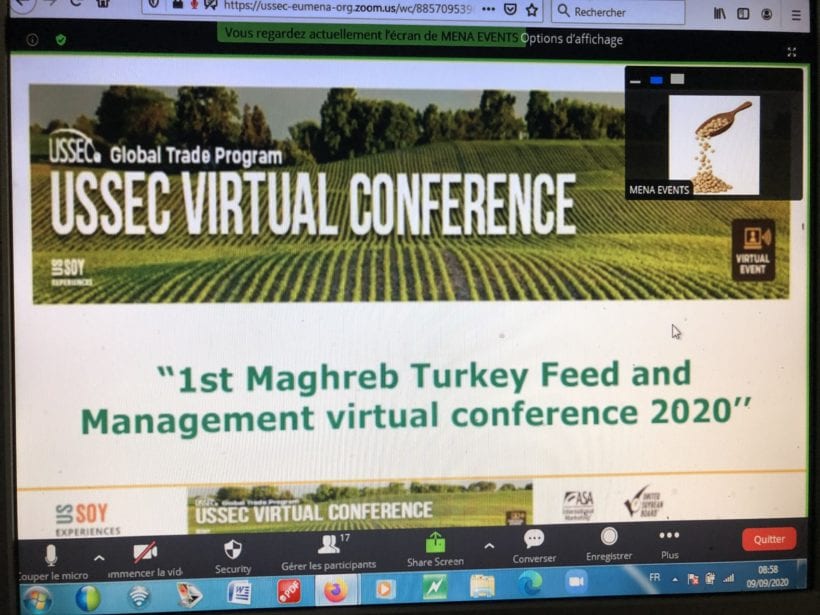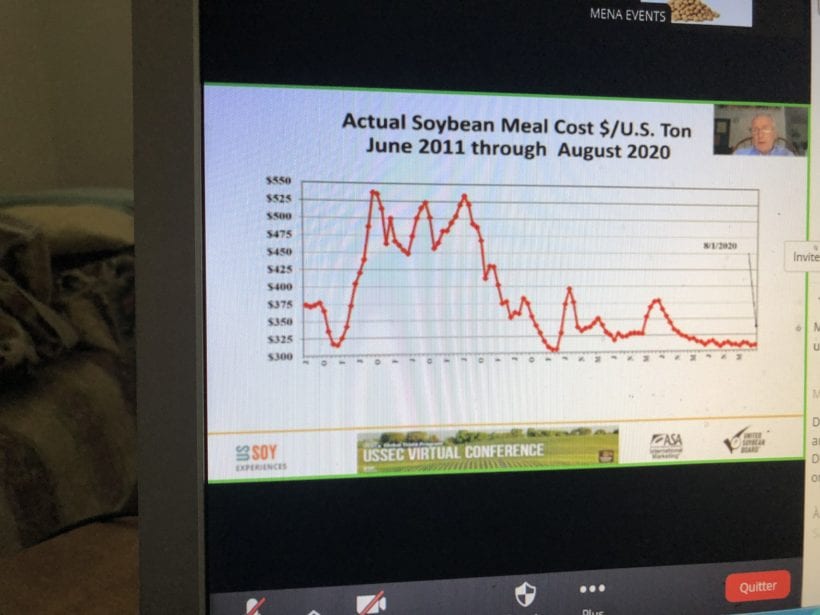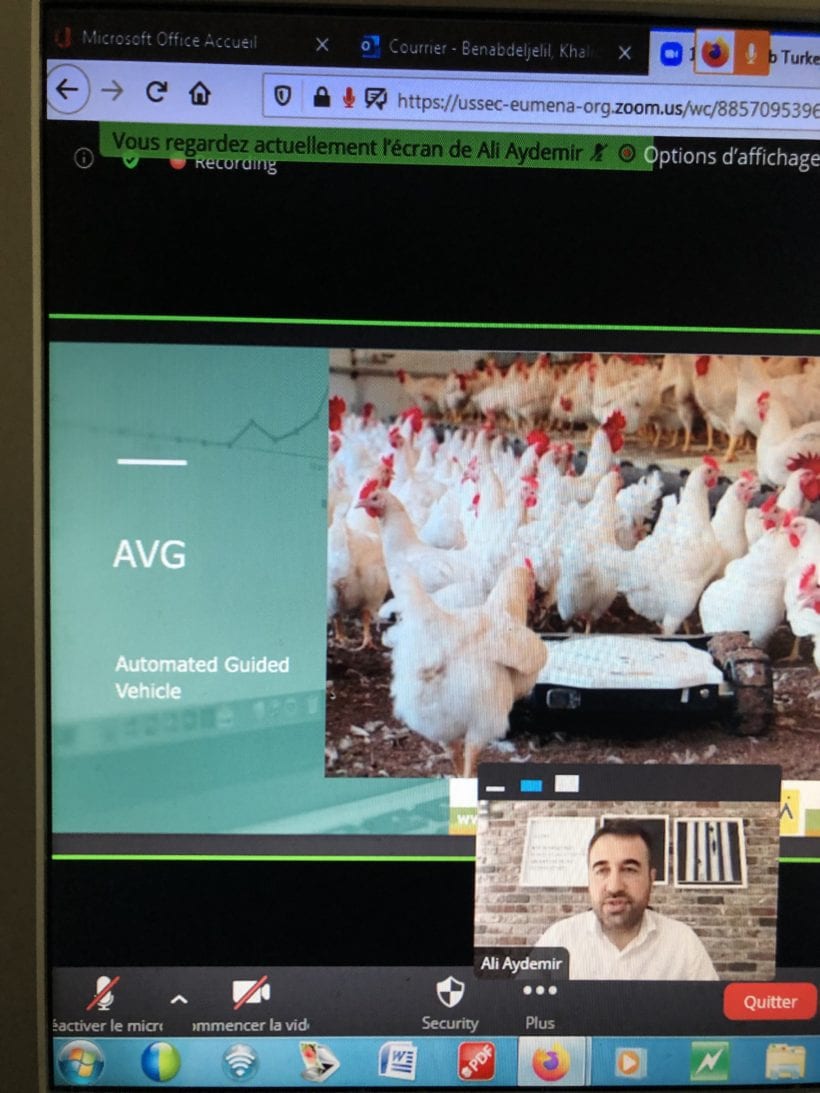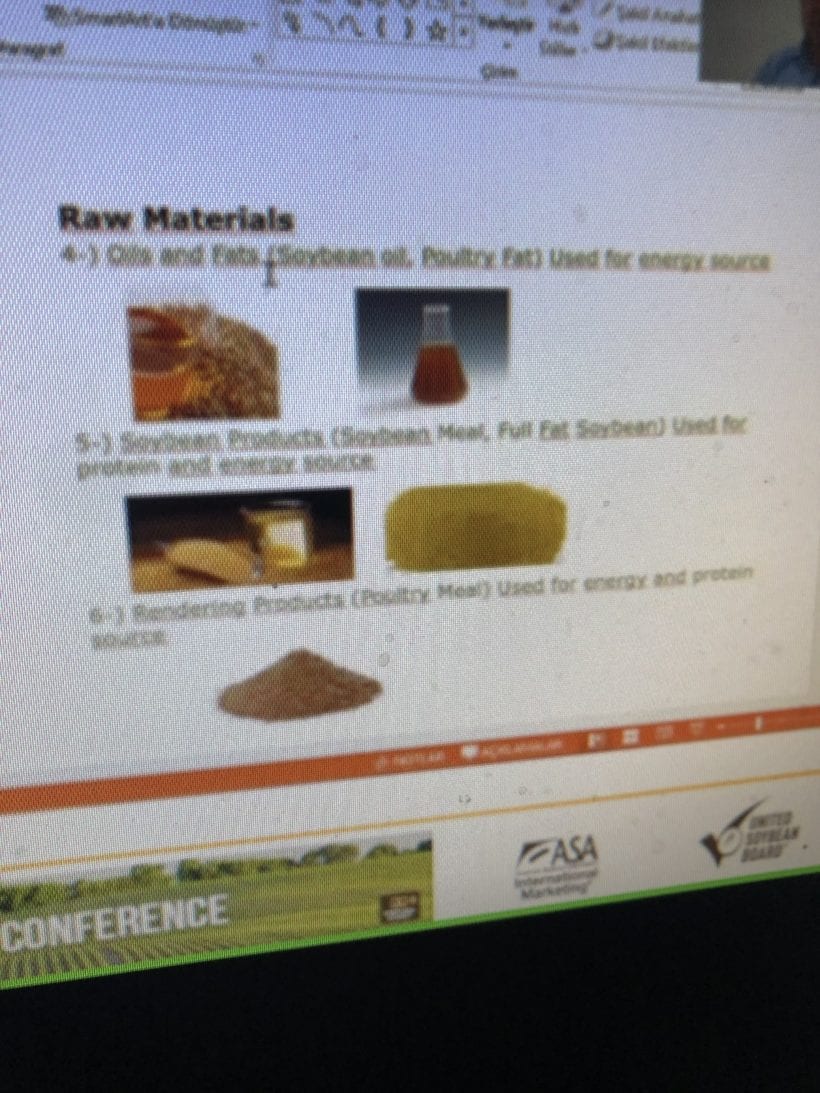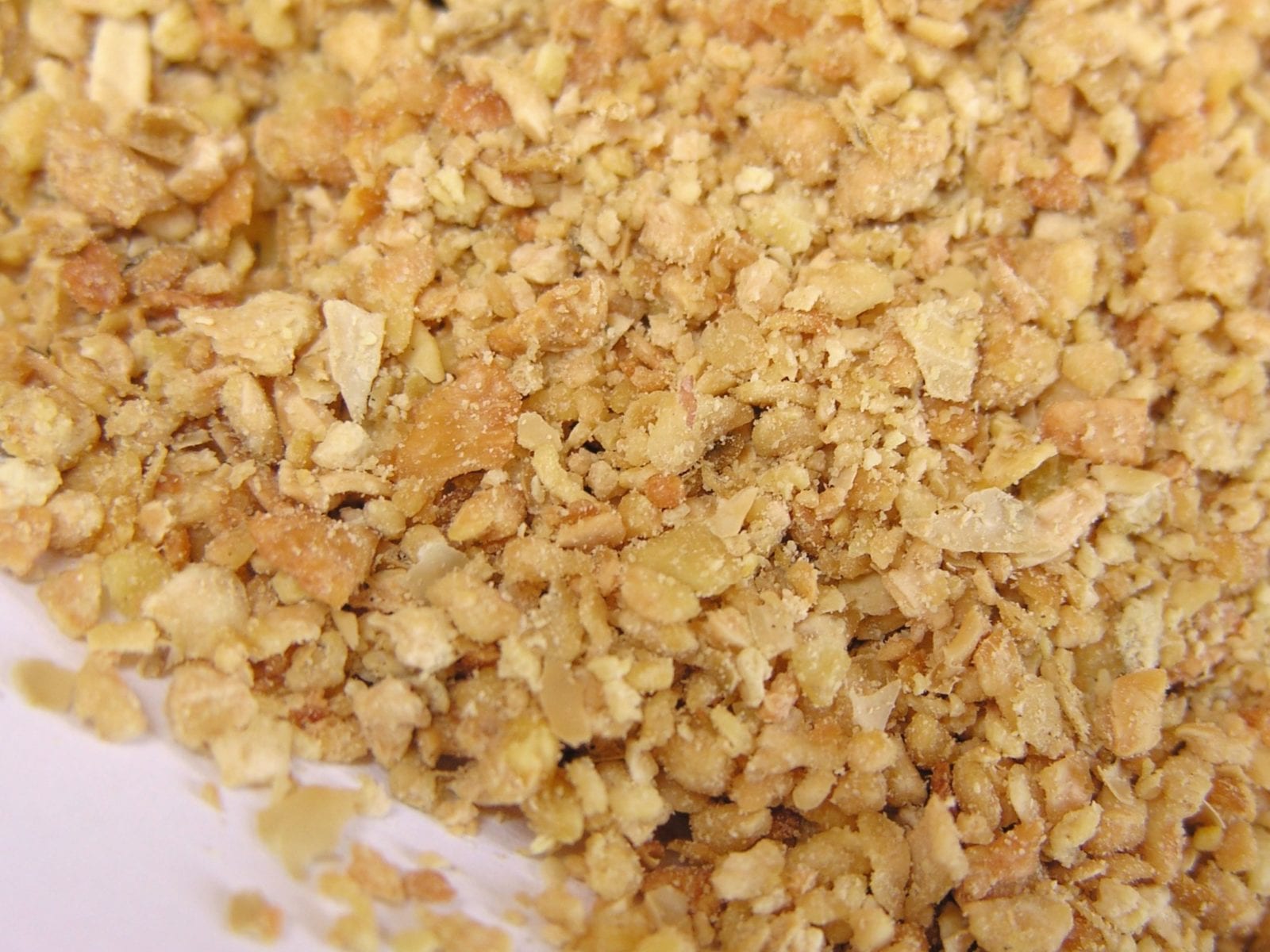
USSEC held the 1st Maghreb Turkey Feed and Management Virtual Conference 2020 on September 9. The virtual event attracted 35 key feed and poultry professionals and provided the most updated information on feed, management, and production issues.
Brent Babb, USSEC Regional Director – Europe / Middle East North Africa (MENA), welcomed participants highlighting the importance of the North Africa region for U.S. soybean exports and USSEC’s efforts in building preference for sustainable U.S. soy products.
USSEC consultant Mike Donohue, vice president of Agristats, covered U.S. antibiotic-free production trends and the U.S. turkey production sector. Overall inclusion rates of soybean meal in broiler feed have increased in the U.S. to an average of 25% with a lower use of byproducts.
Dr. Jose Ignacio Barragan of Cos Galimetria Estadistica SL, updated attendees on maintaining gut health during periods of heat stress in poultry and on nutritional strategy changes when no antibiotics are used in poultry feeding. Adjusting dietary amino acids profile and high feed digestibility remain key elements to fighting heat stress along with the use of fats/soy oil and reduction of high fiber raw materials. Using quality soybean meal like U.S. meal improves the available lysine supply.
Aydemir Ali, founder of Maestro Teknoloji Ltd. from Turkey, presented some possible uses of digitalization technologies to improve management in poultry integrations and Cenk Dogru A. director of Camli integration, Turkey, covered a few practical aspects of his turkey operation. Soybean meal and soy oil are essential quality ingredients that are incorporated in turkey feed.
Participants asked several questions on the eventual effects of changes in their operational management strategies and practices; they appreciated the diversified information shared during this FY20 USSEC event. Poultry feed remains by far the major driver of soy product demand and the main animal origin proteins source consumed. USSEC continues to assist local producers providing updated information addressing specific issues through a variety of programs to differentiate value, sustainability, and the competitive advantage of U.S. Soy.
